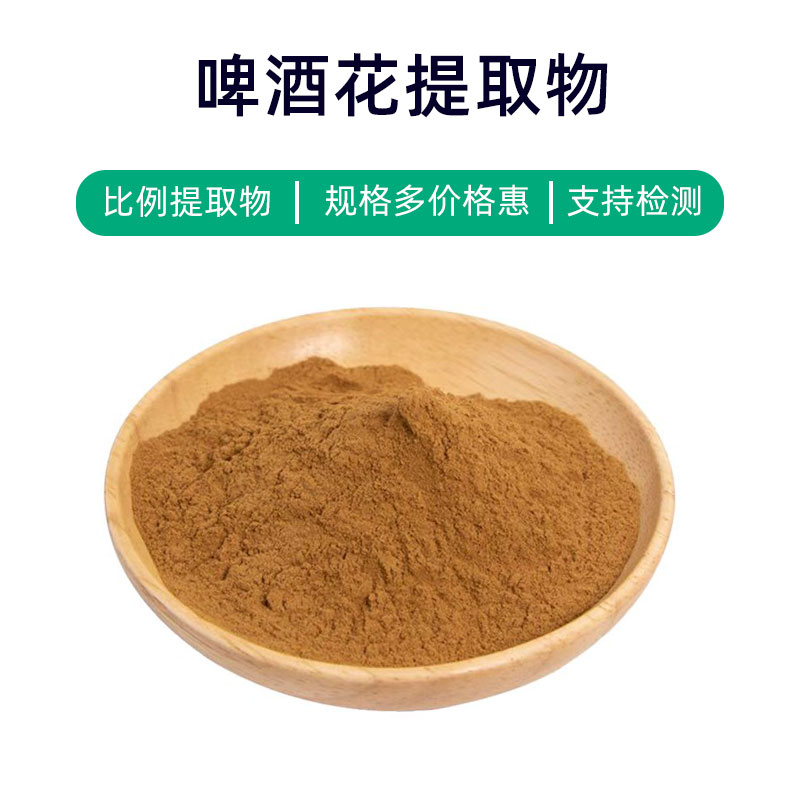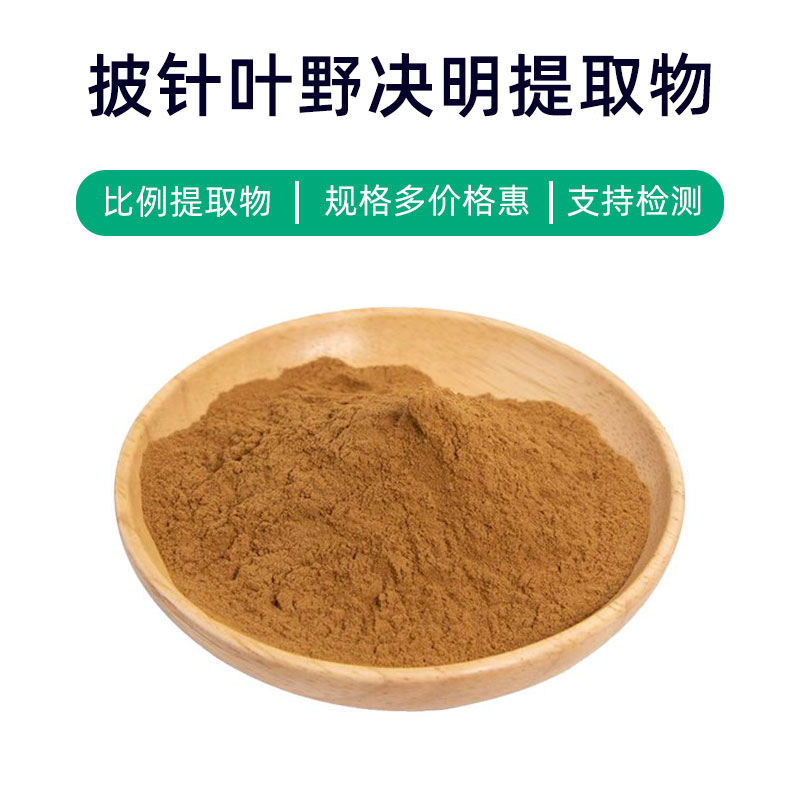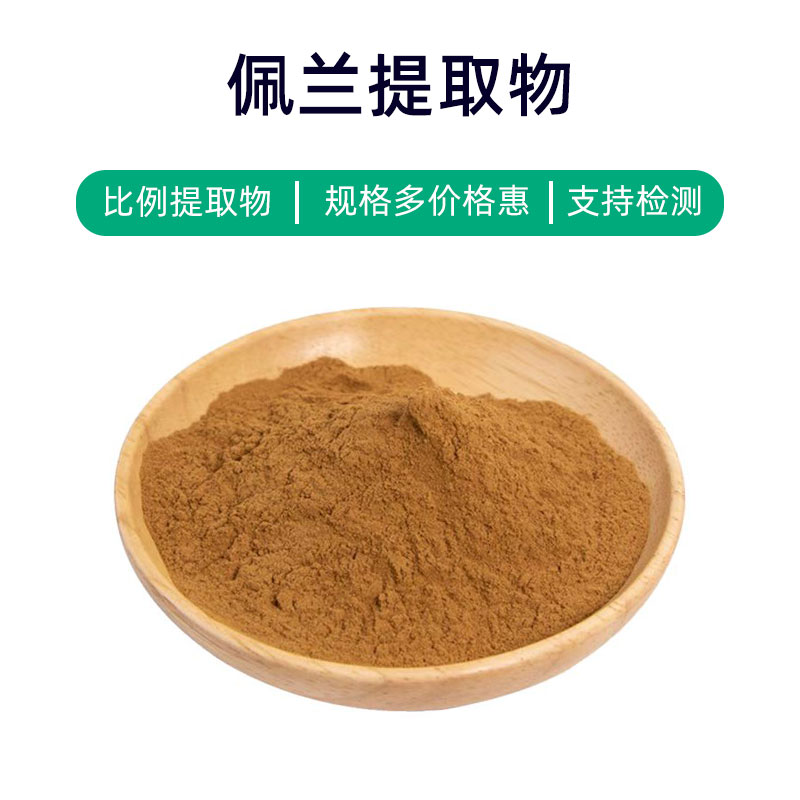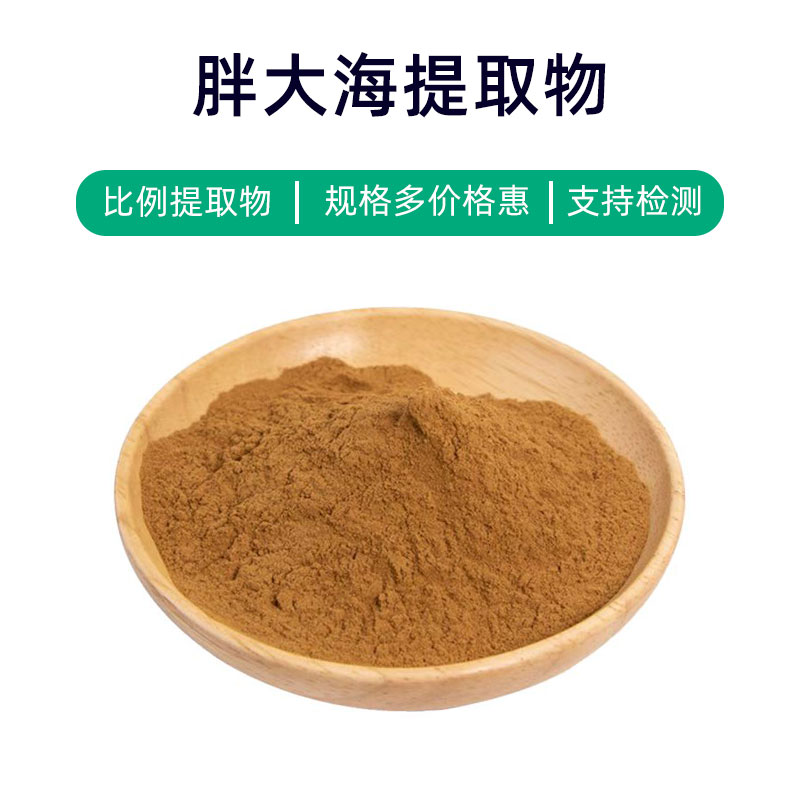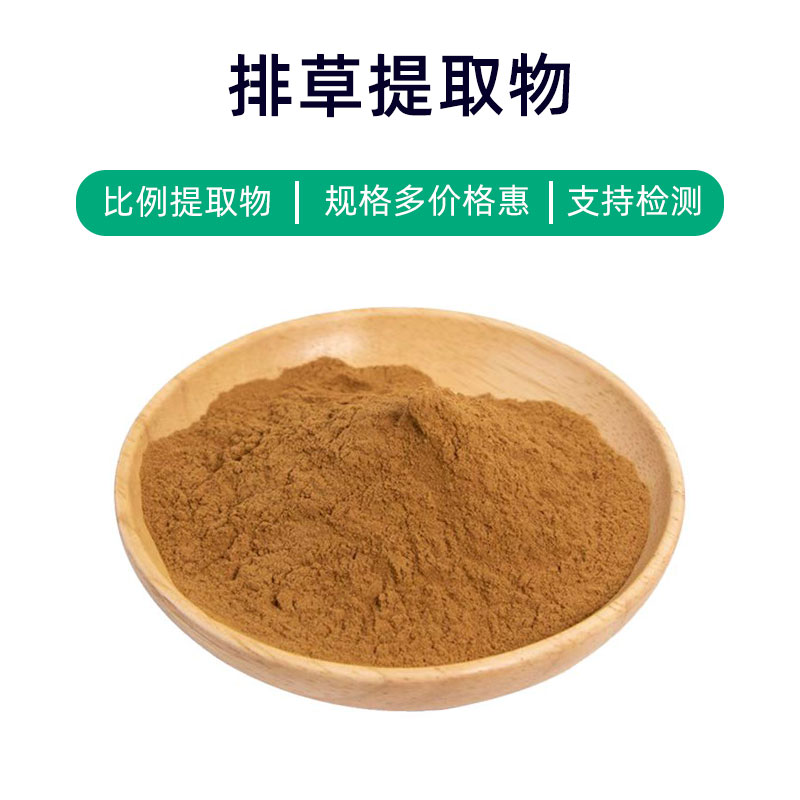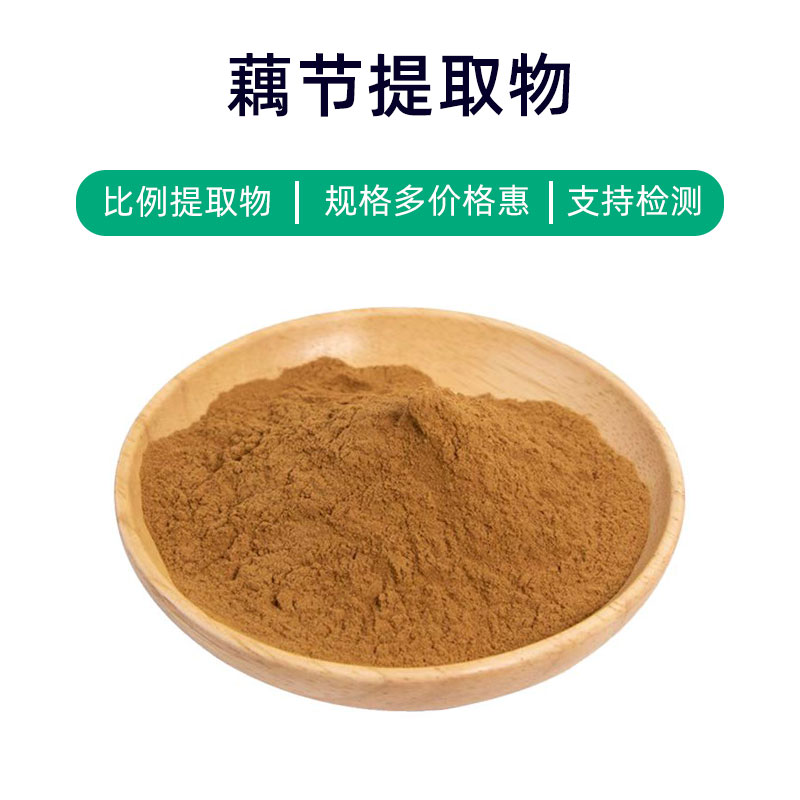Kudzu Flower Extract Product Introduction
Kudzu flower extract is a natural plant extract derived from Kudzu flowers, primarily composed of flavonoids, including soy isoflavones. These flavonoids exhibit various biological activities and are commonly used in pharmaceuticals, dietary supplements, food, and cosmetics.
The product's benefits are mainly reflected in the following areas:
- Antioxidant: Kudzu flower extract is rich in flavonoids, offering strong antioxidant properties that help eliminate free radicals, slow down cellular aging, and protect cells from oxidative stress.
- Blood Pressure Reduction: Studies show that active components in the extract can regulate vascular relaxation, helping to lower blood pressure and improve cardiovascular health.
- Anti-inflammatory: The extract has notable anti-inflammatory effects, alleviating inflammatory responses and symptoms of inflammatory diseases.
- Bone Density Improvement: Some research indicates that components like soy isoflavones benefit bone health by promoting bone formation, improving bone density, and preventing osteoporosis.
In the medical field, Kudzu flower extract is commonly used to formulate cardiovascular drugs and antioxidant supplements; in food, it can be added to functional foods such as health supplements and beverages; in cosmetics, it is often found in anti-aging and antioxidant skincare products. Dosage typically depends on the specific product, and it's advisable to use under the guidance of a physician or professional.
Kudzu Flower Extract Production Process
The production process for Kudzu flower extract generally includes the following steps:
- Raw Material Preparation: Selecting high-quality, fresh, and dry Kudzu flowers for extraction.
- Grinding: Grinding the Kudzu flowers into finer particles to enhance extraction efficiency, often done using mechanical grinding or microwave radiation.
- Extraction Process: Using suitable solvents to extract the ground Kudzu flowers. Common solvents include water, ethanol, and ether. Control of temperature, pressure, and extraction time is crucial to ensure efficient extraction and quality of the extract.
- Concentration of Extract: Concentrating the liquid obtained by removing most of the solvent to achieve a concentrated extract.
- Solvent Removal: Using methods such as evaporation or reduced pressure concentration to eliminate the solvent from the concentrated extract.
- Purification: Further purifying the solvent-free extract through precipitation, crystallization, and filtration to remove impurities and enhance product purity.
- Drying: Finally, drying the purified extract to eliminate residual moisture and obtain a dry extract.
- Packaging and Storage: Packaging the dried Kudzu flower extract according to specific standards to prevent contamination and moisture, and storing it in a cool, dry place to maintain its stability and quality.
Kudzu Flower Extract Effects and Side Effects
Kudzu flower extract is a common herb extract with various effects and benefits, mainly including:
- Anti-inflammatory Effects: Rich in active components, it shows evident anti-inflammatory properties and can be used to treat various inflammatory diseases, such as rheumatoid arthritis and dermatitis.
- Antioxidant Effects: The polyphenolic compounds in the extract possess potent antioxidant properties, aiding in free radical elimination, anti-aging, and protecting cells from oxidative damage.
- Antibacterial Effects: Research indicates that the extract inhibits various bacteria and fungi, useful for preventing and treating related infectious diseases.
- Anti-tumor Effects: Some compounds in the extract exhibit inhibition of tumor cells, potentially suppressing their proliferation and metastasis, making them candidates for anti-tumor drugs.
- Blood Pressure Regulation: Certain components in the extract can help lower blood pressure and are useful in the supportive treatment of hypertension and other cardiovascular diseases.
- Liver Protection: Kudzu flower extract demonstrates protective effects on the liver, promoting hepatocyte regeneration and improving liver function, serving as an adjunct treatment for hepatitis and fatty liver.
- Immune Function Regulation: It can modulate the immune system, enhancing immunity and preventing infectious diseases.
- Anti-allergic Effects: Some studies suggest it may alleviate symptoms of allergic diseases such as allergic rhinitis and urticaria.
Though Kudzu flower extract has multiple benefits, caution is advised during use. Certain individuals may be allergic to it, leading to adverse reactions such as skin allergies or digestive issues. Long-term high-dose use may also harm the liver, so it's important to follow medical advice and use it in moderation to avoid side effects.
Kudzu Flower Extract Application Scenarios and Dosage
Kudzu flower extract has a wide range of applications in medicine, food, and cosmetics, detailed as follows:
- Medical Applications: As a traditional herb, it is often used in TCM (Traditional Chinese Medicine) for treating rheumatoid arthritis and similar rheumatic diseases, known for its anti-inflammatory and pain-relieving properties. Typically, it is consumed in the form of pills, oral liquids, or topical patches, with adults generally advised to take 3-6 grams daily.
- Food Applications: It is commonly used as a food additive to enhance the nutritional value and health benefits of products. For instance, it can be added to tea drinks, functional beverages, and health supplements. The dosage is usually small, not exceeding 1% of the total product formulation according to processing requirements.
- Cosmetic Applications: Due to its antioxidant, antibacterial, and anti-inflammatory properties, it is also used in cosmetics. Common products include creams, masks, and shampoos aimed at improving skin condition, reducing sensitivity, and delaying skin aging. The dosage is generally between 1-5% of the total formula and should be tailored to the product's nature and formulation requirements.
- Other Applications: Kudzu flower extract can also be used to create health products and medicinal alcohols, possessing immune-regulatory and metabolic-boosting effects.
In summary, Kudzu flower extract, as a natural plant extract, has promising applications across medicine, food, and cosmetics. However, its production should adhere to relevant regulations and standards to ensure quality and safety. The specific dosage and methods for different applications should align with product characteristics and usage requirements, following reasonable dosage principles to guarantee safe and effective use.
Kudzu Flower Source Plant Introduction, Distribution, and Growth Environment
Kudzu flower (scientific name: Lonicera japonica Thunb.) belongs to the honeysuckle family and is commonly known as honeysuckle or gold-silver flower. It is a widely recognized woody climbing plant. Here is a detailed introduction to the source plant of Kudzu flower extract, including distribution and growth environment:
- Source Plant Introduction: Kudzu flower is an evergreen or semi-evergreen climbing plant with slender, grayish-brown stems and a degree of hardiness. The leaves are opposite, oval to ovate-lanceolate, smooth on the upper surface and waxy on the underside. The small, beautiful flowers are white or pale yellow, emitting a light fragrance, with significant medicinal and ornamental value.
- Distribution: Kudzu flower is native to Southeast China and Japan, widely distributed in provinces such as Jiangsu, Zhejiang, Anhui, Fujian, Jiangxi, and Guangdong in China, as well as in North Korea and Japan. In China, it commonly grows on hillsides, along roadsides, by streams, in fields, and forest edges, showing strong adaptability and a broad range of growth environments.
- Growth Environment: Kudzu flower thrives in sunny, moist, and well-drained conditions and is not strict about soil types. It can be found in various terrains including hills, plains, and elevated areas, with a wide altitude range. Typically, it grows below 500 meters but can be found at elevations above 2000 meters. Its cold tolerance and adaptability allow it to flourish in warm, humid climates.
- Main Growth Period: Kudzu flowers typically bloom from late spring to early summer, with a long floral period lasting several months until late summer. After blooming, the plant enters the fruit maturation phase. The fruit is blue-black berries that can be harvested and processed, offering additional medicinal value.
In conclusion, Kudzu flower is a common climbing plant widely distributed in Southeast China and Japan, highly adaptable to various growth environments and preferring sunny, moist conditions. It has a long flowering period, high ornamental value, and significant medicinal properties, making it widely used in traditional medicine and the food industry.
Processing and Storage of Kudzu Flower Extract
The processing of Kudzu flower extract includes several steps: first, mature Kudzu flowers are harvested, followed by cleaning and drying as pre-treatment processes, then extraction, commonly using water or ethanol. After extraction, concentration and filtration steps are carried out to obtain the final Kudzu flower extract. For storage, Kudzu flower extract should be kept in a cool, dry place, away from direct sunlight and high temperatures, and should be sealed to prevent moisture and oxygen exposure, thus extending its shelf life.
Monica Sun is a seasoned expert in the plant extraction industry with over a decade of experience in research and production. She specializes in the extraction and purification of plant active ingredients, focusing on driving innovation in natural product applications. Monica has participated in the development of multiple functional plant extracts, delivering high-value natural raw material solutions for the health food, pharmaceutical, and dietary supplement sectors.









